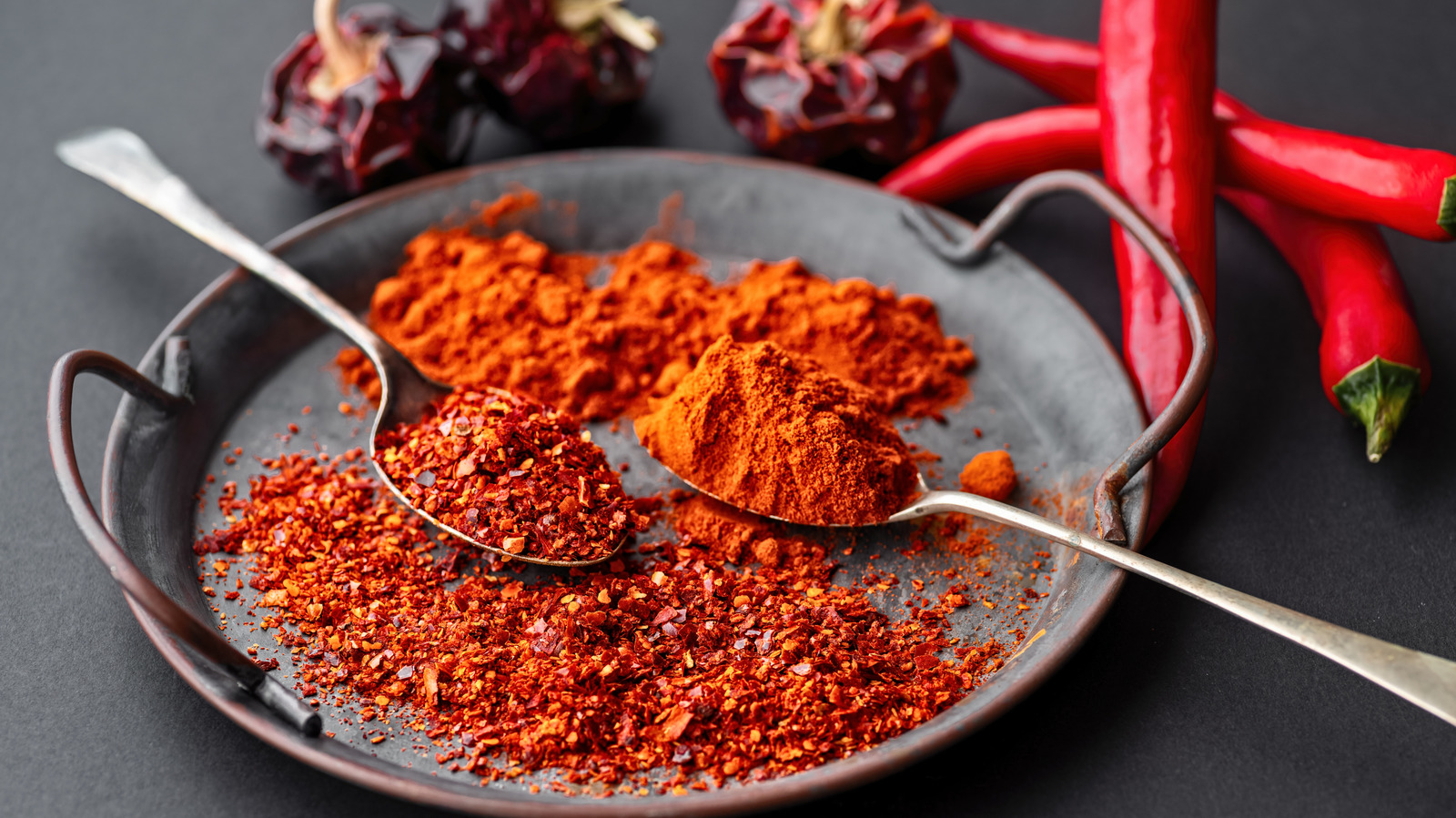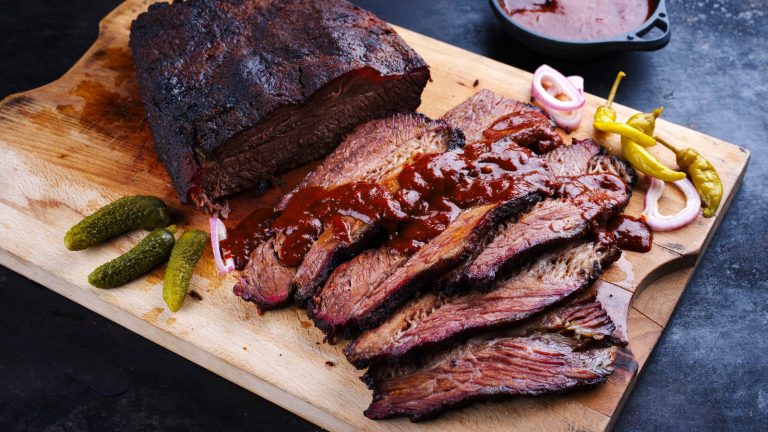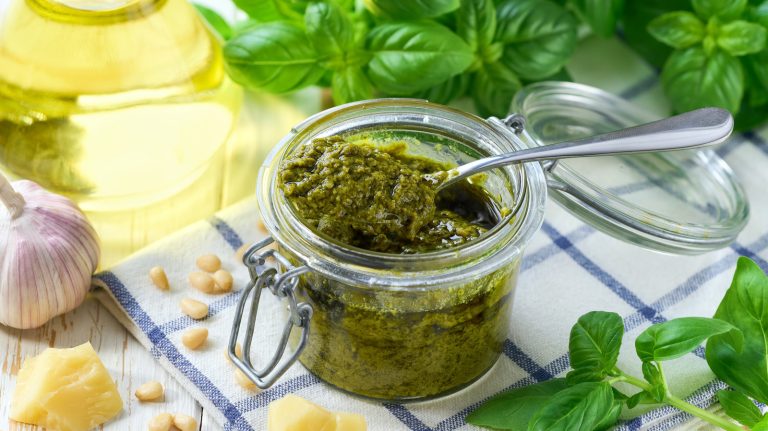Spicy food is not for the weak, but once you’ve developed the taste buds for it, you’ll open yourself up to a world of flavors that might have scared you off before. The next time you’re perusing the grocery store aisles, consider stepping outside of your mild comfort zone and taking a risk with a new spicy ingredient.
Thrill-seekers have been scientifically proven to be more attracted to spice-forward dishes. Someone who likes to ride motorcycles at high speeds, enjoys the quick drop on a roller coaster, or thinks bungee jumping and skydiving sound fun, is more likely to douse their mac and cheese in hot sauce, bite into a raw hot pepper, or choose the spiciest level of curry. Spice can trigger the release of endorphins, much like after a stressful fight-or-flight experience. Once the danger of the heat has worn off, those thrill-seekers get a sense of accomplishment.
Spice tolerance is a gradual process that requires an element of risk and a strong stomach. If you’re tempted to tantalize your tongue with a kick of heat for the first time, you’ll have to slowly make your way up the Scoville Scale. For those seeking their next fiery adventure, try adding one of these 11 spiciest supermarket ingredients to your shopping cart.
1. Habanero peppers
Habanero peppers were once considered the world’s hottest chili when they won a Guinness World Record in 1999, but they’ve since been surpassed by fiery ghost peppers and the newly crowned Pepper X. Nevertheless, the pungent chili pepper hails from the Amazon and has become a key ingredient in sauces and salsas that can bring tears to your eyes. There are more than 18 varieties of habanero peppers, with orange being the most common and dark red being the hottest.
Habanero peppers fall within the range of 100,000 to 350,000 units on the Scoville Scale, which measures the spiciness of peppers and other hot foods. They are considered super hot, well above poblano and jalapeño peppers. “Habaneros are much hotter but have a marvelous apricot-like aroma. A small amount makes the best fresh salsa,” Dave DeWitt, hot pepper expert and author of multiple books on the subject, told Chowhound.
These chilies pair best with tropical fruits because of their citrusy notes. You can add them to a fruity salsa, make a mango habanero wing sauce, or muddle them down for a pineapple habanero margarita. Plastic gloves are recommended when handling habanero peppers in the kitchen. Make sure to wipe down cutting boards in between uses to clear away any remnants of capsaicin, the active compound that gives peppers their heat.
2. Wasabi
Wasabi dates back to ancient Japan, where it was first used as medicine. The plant’s anti-inflammatory and antibacterial effects were used to treat food poisoning during a time when refrigeration was not accessible. This made it the perfect pairing for raw fish since it could combat any potential bacteria. It’s since been westernized and become a popular condiment among the rise of sushi and sashimi.
Wasabi’s spice comes from a chemical compound, allyl isothiocyanate, also found in mustard and horseradish. The spice tickles receptors in your nose, which is why it feels like you’ve cleared your sinuses after every bite. Unlike its counterpart pickled ginger, which is used as a palate cleanser, wasabi is meant to complement the delicacy of raw fish. But not every jar of wasabi is the same. Beware of the fake stuff, which doesn’t contain any of the pure Wasabia japonica plant. Instead, most grocery stores sell a version made with horseradish, mustard, and cornstarch that’s dyed green for a similar look.
3. Cayenne peppers
Like habanero peppers, cayenne peppers get their heat from capsaicin, which activates pain receptors on the tongue. Consequently, it’s the reason your lips burn after eating a hot pepper. The chemical compound can be painful, but some studies suggest it can actually be a pain reliever due to its anti-inflammatory properties.
Cayenne peppers fall in the range of 30,000 to 50,000 units on the Scoville Scale, sharing a similar mid-level heat with serrano peppers. They are typically ground down to a powder or dried for seasoning flakes, making cayenne a cheaper alternative to most spices since it doesn’t require a heavy hand. In the kitchen, cayenne has become a staple in Cajun dishes, such as gumbo. Traditional Mexican meals, like tacos, enchiladas, and fajitas, would be lackluster if it weren’t for the extra kick. And cayenne is almost always present in Indian curries and Thai soups, among other Asian dishes.
4. Da Bomb hot sauce
“Hot Ones” is a popular YouTube series where host Sean Evans interviews celebrities while they eat their way through chicken wings with increasingly hotter sauces. Evans uses hot sauce as a way to disarm his guests, asking them more personal questions as the spice level heats up. Da Bomb is the only sauce that has consistently remained in every season’s lineup because of its ferocity, measuring 135,600 heat units on the Scoville Scale.
The startling hot sauce is strategically placed at No. 8 in the lineup to make the final two sauces manageable. Hailing from Kansas City, Missouri, Da Bomb is made with habanero peppers and chipotle puree. Actor Jason Sudeikis, another Kansas City native, called it a “disgusting sauce that hurts your mouth” in Episode 1, Season 21 last year. Fans of the show can recreate their own spice-forward talk show at home by securing the official “Hot Ones” sauce at select stores.
5. Harissa
Harissa is the national condiment of Tunisia. The North African staple is a paste made from roasted peppers, usually Baklouti chilies, which are common in Tunisia. Spices like paprika, garlic, and caraway, along with lemon juice and oil create its smooth consistency. If you make your own at home, you can develop the flavor as you like and even swap in some milder peppers, like bell peppers, for sensitive palates.
The spicy paste is similar to sriracha, a favored hot sauce that also features chili peppers and garlic, so they can mostly be used interchangeably. If you like to add sriracha to your eggs, try swapping it for harissa, like chef Bobby Flay does, spreading it on top of a bacon, egg, and cheese sandwich. You can eat it alone as a dip, add a dollop to a boring bowl of soup, or whisk it into yogurt to create a marinade or topping for the protein of your choice, like a hamburger with a Mediterranean twist.
6. Dried Thai chilies
Thai chilies have a rating of 50,000 to 100,000 heat units on the Scoville Scale, falling between a habanero pepper and a jalapeño. Their fiery heat has become a cornerstone of Southeast Asian cuisine, since they were introduced by Portuguese explorers in the 1600s. Thai chilies, also known as bird’s eye chilies, are commonly dried to preserve their intensity and concentrate the capsaicin.
Dried Thai chilies are a versatile spice used in curries, soups, and sauces. If you need some inspiration the next time you’re scanning the aisles, we’ve got you covered. Try adding a sprinkle to this crispy Thai beef recipe for an extra kick. Make sure to remove the seeds and stems before you saute them with shrimp to create a restaurant-worthy stir-fry. You could also use them to make your own homemade hot honey, pizza’s new favorite condiment, or mix them into cornbread batter to level up a boring boxed recipe.
7. Mrs. Renfro’s Ghost Pepper Salsa
Ghost peppers are not for the fainthearted, clocking in with a ranking of 1 million SHUs and an intense flavor that slowly creeps up in a haunting manner. The Guinness Book of World Records declared it the hottest pepper on the planet in 2007. The ultra-hot pepper, also known as Bhut Jolokia, originated in India. While it’s not common to find them raw in the produce aisle at the grocery store, for those looking to test their tolerance, they have snuck their way into snacks and salsas.
Mrs. Renfro’s Ghost Pepper Salsa lets you in on the scorching secret. Serve it as an appetizer to impress that thrill-seeking friend who douses everything in hot sauce. But make sure you have a clear label for anyone who’s scared of the sting. The salsa, made in Fort Worth, Texas, is the brand’s spiciest product. It uses dried ghost peppers, green chilies, chipotle peppers, jalapeños, and ancho chile powder, leaving every bite feeling like you’re putting on a fire-breathing performance.
8. Chili crisp
Chili crisp, also known as chili crunch, has been trending in the U.S. over the past few years, due to its versatile burst of piquant flavor. The beloved Chinese condiment is a combination of sesame oil, fried chili peppers, spices, and crispy bits, like garlic or shallots. Take your pick from one of the many brands popping up on shelves across the country, like Momofuku restaurant group’s Chili Crunch, which stirred up some controversy in the industry when the company tried to trademark the term.
A spoonful of chili crisp can be used in endless ways. In Chinese cuisine, it’s traditionally drizzled over dumplings, rice, and noodles. Foodies have been swapping out olive oil with the spicy infusion to fry their eggs with some extra heat. It’s also a great pizza topping when you want something saucier than crushed red pepper flakes. And if you really want to make your taste buds dance, build a sweet and spicy sundae by pouring it over your next bowl of vanilla ice cream.
9. Sichuan peppercorns
Before chili peppers made their way to China, Sichuan peppercorns were a key source of spice in the local cuisine. Native to the Sichuan province, they are the shells of dried berries from the prickly ash tree and have a naturally citrusy flavor. Sichuan peppercorns can create a numbing and vibrating sensation called mala when they hit your lips. The chemical compound present in them triggers the tactile receptors in your lips, making them buzz as if you’re humming.
Sichuan peppercorns don’t mask your taste but rather enhance it with the complexity of each bite. Once you get the feeling back in your lips, you’ll be reaching for more. They are commonly roasted, sprinkled over dishes like mapo tofu, or ground into a powder for a tingling bite of kung pao chicken. You can liven up your next snack mix by pairing them with buttery cashews and dried fruit.
10. Raw radishes
Raw radishes have a spicy, peppery taste. Like wasabi, the plant contains the chemical compound allyl isothiocyanates, its defense mechanism against potential threats. Cooking radishes mellows the flavor by breaking down the active compound. The spice develops over time in the soil, so spice-forward enthusiasts and gardeners can wait until they’re happy with the bite before harvesting. The skin is what holds all the spice, so keep it intact if you want to use the vegetable for a peppery punch.
Slice rounds of raw radishes over a salad or grain bowl that needs some extra crunch and spice. The nutrient-rich veggie boasts antioxidants and fibers that are healthy for your digestion. Shred them down into coleslaw and slather it on as a replacement for horseradish on your next French dip. Or jar them in a mixture of white vinegar and spices for a tangy pickle, a favorite counterpart to Korean fried chicken.
11. A bag of fiery chips
Choosing a bag of chips that will make your eyes well up with tears, your palms sweat, and your nostrils flare could be considered a form of masochism. Pain seekers have plenty of options to peruse for their next fiery craving, as snack companies continue to ramp up the heat levels. Paqui introduced the One Chip Challenge in 2016. The Austin-based snack maker sold a single tortilla chip dusted with two of the hottest peppers in the world: the Carolina Reaper and the Scorpion Pepper. It was later pulled off the market in 2023 after customers expressed safety concerns.
For a safer bet, grab a bag of Takis’ original Fuego flavor made with hot chili pepper and lime. The rolled tortilla chips are mild in comparison to the One Chip, but that’s why they’re sold by the bagful. You can also get your ghost pepper fix with a bag of potato waffle chips dusted with one of the world’s hottest peppers from Trader Joe’s. Or test the waters with Pringles’ new limited line of “Hot Ones” chips, featuring flavors of Los Calientes hot sauces, including Rojo, Verde, and Barbacoa.





